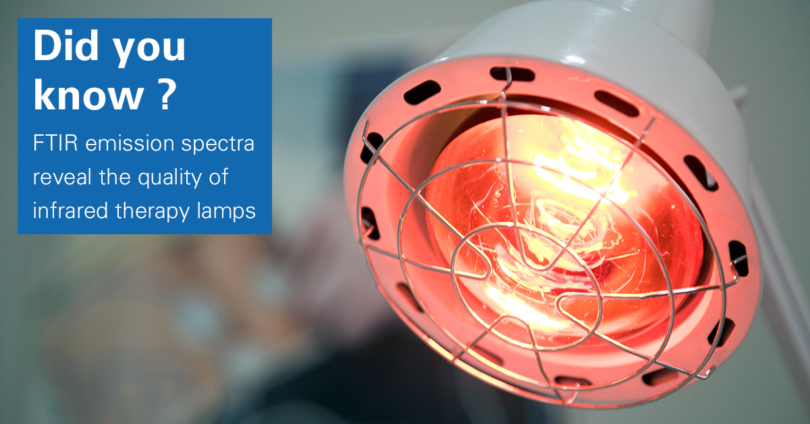When it comes to backache, neck or joint pain, infrared (IR) therapy lamps can help in combination with other physiotherapy treatments (acupuncture, acupressure, electrotherapy or fitness training). Since IR light therapy is very effective in pain-relieving and the lamps are easy to handle, the use of an IR lamp at home is gaining popularity. But how to judge the quality of IR therapy lamps and to screen the performance of such devices?
The heat deposited by the IR light can propagate up to a few centimeters deep underneath the skin, reach the muscles, nerves and even the bones. IR light with different wavelengths (λ) has varying penetration depth and hence different areas of application. Many studies have shown that IR light with λ ranging from 700 (still visible) to 1000 nm is best used for healing. The most IR bulbs used in such therapy lamps emit not only in this short-wave range but have a much broader emission spectrum down to THz radiation with λ = 1mm. Since some fractions of the wavelength dependent emission spectrum are predominantly absorbed in the upper skin layer, if their intensity is too high they can cause overheating or skin irritations.
Therefore, to check the quality of such lamps, it is necessary, not only to measure the total irradiation intensity of the IR bulb, but also the wavelength dependent intensity distribution. At this point FTIR spectroscopy is the key which can exactly deliver this important information by emission spectroscopy.
Bruker INVENIO and VERTEX research FTIR spectrometers are optimized i.e. for emission experiments in different manners and the whole spectral range of interest for this application is achievable. Two separate emission ports offer both focused or parallel beam input options suitable for all kinds of end product designs. Dedicated sample accessories for basic material development and black body reference sources are also available. Within minutes an emission spectrum can be recorded. And thanks to smart software functions (described in Bruker Application Note AN M164) the emissivity can be calculated, after a proper reference has been measured.

Center,China
Dr. Qian, a Bruker customer from this field has exactly done this to develop emitting materials for IR physiotherapy lamps and in order to introduce reliable certification regulations for similar products on the market (experimental setup shown in above picture). Read more about their work here.








